#wetlands
Text
#peyton list#tears of the kingdom#remus lupin smut#haircut#kat graham#camaro#bass#wetlands#CMBYN#madison ivy#norman reedus
120 notes
·
View notes
Text
#tears of the kingdom#bangtan sonyeondan#EastEnders#terato#camaro#poetsandwriters#bass#beomgyu#wetlands#norman reedus#Fanart#aaron tveit#pantied#south korea#spring
122 notes
·
View notes
Text
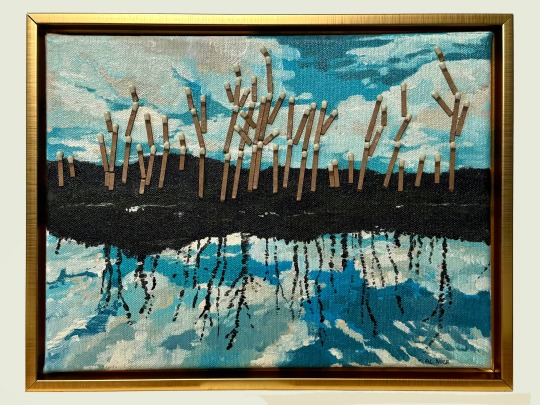
“For What Use” (2024)
9in x 12in acrylic on recycled canvas
#this piece does not come with an essay. it’s a simple thought about lumber vs ecosystem services#art of mine#artists on tumblr#acrylic painting#fine art#contemporary art#matches#fire#lumber#clear cutting#wetlands
52 notes
·
View notes
Text

Sun Rising Over the Wetlands
#artists on tumblr#original photographers#original photography#hiking#pacific northwest#nature#washington#pnw#nikon#orofeaiel#belfair#wetlands#mary e theler#landscape#sunrise#morning#mist#fog
35 notes
·
View notes
Text
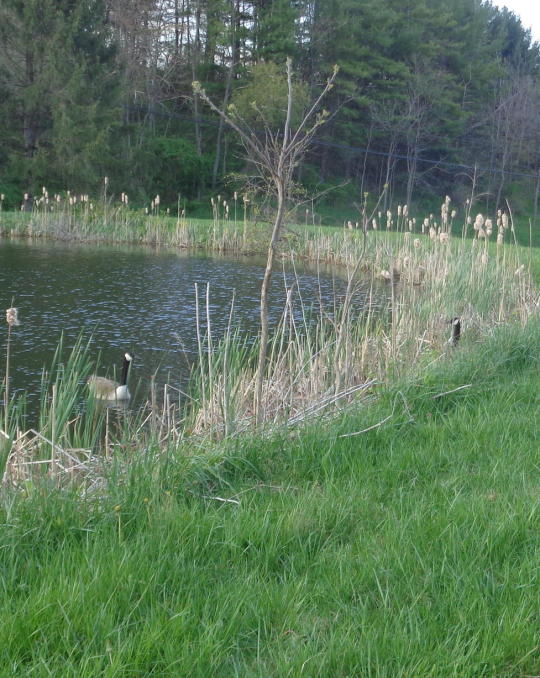
The pond dinosaurs are nesting. We never, and I mean never, had geese nest here until last year. The eggs are so large!
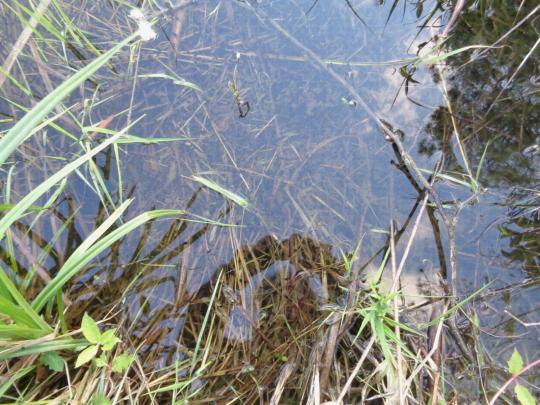
Also, the thousands of mating frogs and toads have given way to uncountable numbers of tadpoles.

Just - so MANY little guys!
15 notes
·
View notes
Text
Girls will be like “oh I’m just running some quick errands” and then spend all day in the wetlands appreciating the unique flora and fauna
8K notes
·
View notes
Text
"When considering the great victories of America’s conservationists, we tend to think of the sights and landscapes emblematic of the West, but there’s also a rich history of acknowledging the value of the wetlands of America’s south.
These include such vibrant ecosystems as the Everglades, the Great Dismal Swamp, the floodplains of the Congaree River, and “America’s Amazon” also known as the “Land Between the Rivers”—recently preserved forever thanks to generous donors and work by the Nature Conservancy (TNC).
With what the TNC described as an “unprecedented gift,” 8,000 acres of pristine wetlands where the Alabama and Tombigbee Rivers join, known as the Mobile Delta, were purchased for the purpose of conservation for $15 million. The owners chose to sell to TNC rather than to the timber industry which planned to log in the location.
“This is one of the most important conservation victories that we’ve ever been a part of,” said Mitch Reid, state director for The Nature Conservancy in Alabama.
The area is filled with oxbow lakes, creeks, and swamps alongside the rivers, and they’re home to so many species that it ranks as one of the most biodiverse ecosystems on Earth, such that Reid often jokes that while it has rightfully earned the moniker “America’s Amazon” the Amazon should seriously consider using the moniker “South America’s Mobile.”
“This tract represents the largest remaining block of land that we can protect in the Mobile-Tensaw Delta. First and foremost, TNC is doing this work for our fellow Alabamians who rightly pride themselves on their relationship with the outdoors,” said Reid, who told Advance Local that it can connect with other protected lands to the north, in an area called the Red Hills.
“Conservation lands in the Delta positions it as an anchor in a corridor of protected lands stretching from the Gulf of Mexico to the Appalachian Mountains and has long been a priority in TNC’s ongoing efforts to establish resilient and connected landscapes across the region.”
At the moment, no management plan has been sketched out, but TNC believes it must allow the public to use it for recreation as much as possible.
The money for the purchase was provided by a government grant and a generous, anonymous donor, along with $5.2 million from the Holdfast Collective—the conservation funding body of Patagonia outfitters."
youtube
Video via Mobile Bay National Estuary Program, August 7, 2020
Article via Good News Network, February 14, 2024
#united states#alabama#estuary#wetlands#swamp#river#environment#environmental issues#conservation#video#biodiversity#american south#ecosystems#ecology#conservation news#wildlife conservation#ecosystem#conservation efforts#good news#hope#forest#swampco#re#Youtube
2K notes
·
View notes
Text

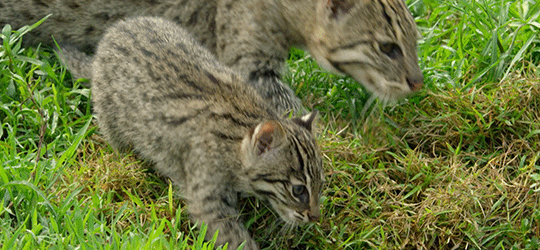




A fishing cat practices hunting with her kittens.
BBC Earth
5K notes
·
View notes
Text

Tag urself: wet 'n' wild wetland edition! (source)
2K notes
·
View notes
Video
Haoyang Lake wetland park, China | source
5K notes
·
View notes
Text
Plain Language Summary
Methane is a potent greenhouse gas and understanding what controls methane production from microbes to plant communities can improve our estimates of wetland fluxes and global methane budgets. We propose characterizing methane dynamics in herbaceous wetlands at the scale of plant patches as patches integrate multiple local properties, are generally discrete, and relatively easy to map and measure. To characterize common wetland patch types, we investigate patterns of dissolved methane, soil biogeochemistry, and plant properties in 4 vegetated (submerged vegetation, forb, grass, and sedge) and 1 unvegetated wetland patch types in a temperate, freshwater, herbaceous wetland.
Here's the (open access) paper: Sharp et al. (2024)
Submitter comment: "I'm crying laughing about this 'plain language' summary. It's like that one xckd comic [Ed.: link here]:
“‘wetland dynamics are second nature to us biogeochemists so it's easy to forget that the average person probably only knows fluxes, a few types of wetlands, and plant patches.’
“‘And forbs.’
“‘Of course.’”
426 notes
·
View notes
Text
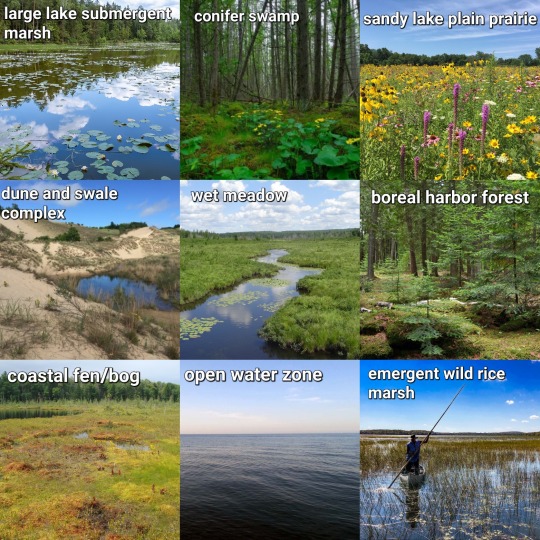
#poll#great lakes#ecosystems#ecology#marsh#lake#lakeposting#freshwater#wetlands#fen#bog#cattail#wild rice#forest#boreal#boreal forest#prairie#dune#dunes#dune and swale#estuary#delta#wet meadow#swamp
3K notes
·
View notes
Text
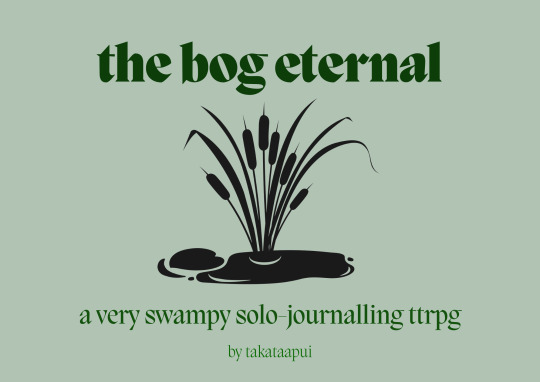
the bog eternal - a very swampy solo-journalling ttrpg by takataapui
A very swampy solo-journalling ttrpg about fighting against oppression with your inherent attributes. Will you win that fight, or will you be just another statistic of bogs that have been drained.
Don't read into this. It definitely isn't an allegory for anything. It's just a game about a bog. A bog that is being harmed by forces outside it's control, by oppressive systems, by people doing and perpetuating harm against you and other bogs like you. Listen, stop reading into it. It's just a game about using your inherent traits to fight back against those previously mentioned forces. Aka humans. Humans are the worst. Like I said, nothing beneath the surface here.
You'll need a d4, a d6, and something to record your battles.
Save the bogs. Donate to and/or volunteer for your local wetland trust. Some options provided.
less than 24 hours later, I'm back with another boggy ttrpg to secure my place as the weird little bog ttrpg boy.
#indie ttrpg#solo journalling ttrpg#swamps#wetlands#baby's second ttrpg doesn't sound as good unfortunately#bog tag#my ttrpgs
276 notes
·
View notes
Photo

TYPES OF WETLANDS:
Did you know there are different kinds of wetlands? In addition to the tidal salt marshes you might think of, there are also swamps, bogs, fens, and freshwater marshes!
Types of wetlands:
Marshes
Marshes are defined as wetlands frequently or continually inundated with water, characterized by emergent soft-stemmed vegetation adapted to saturated soil conditions. There are tidal salt marshes or freshwater marshes.
Swamps
A swamp is any wetland dominated by woody plants.
Bogs
Bogs are characterized by spongy peat deposits, acidic waters and a floor covered by a thick carpet of sphagnum moss.
Fens
Fens are peat-forming wetlands that receive nutrients from sources other than precipitation: usually from upslope sources through drainage from surrounding mineral soils and from groundwater movement. Fens differ from bogs because they are less acidic and have higher nutrient levels.
Learn more about wetlands:
https://www.epa.gov/wetlands/classification-and-types-wetlands
2K notes
·
View notes
Text

Misty Morning in Belfair
#artists on tumblr#original photographers#original photography#hiking#pacific northwest#nature#washington#pnw#nikon#orofeaiel#wetlands#landscape#fog#mist#moody#dramatic#belfair#wa#mary e theler#scene
319 notes
·
View notes
Text
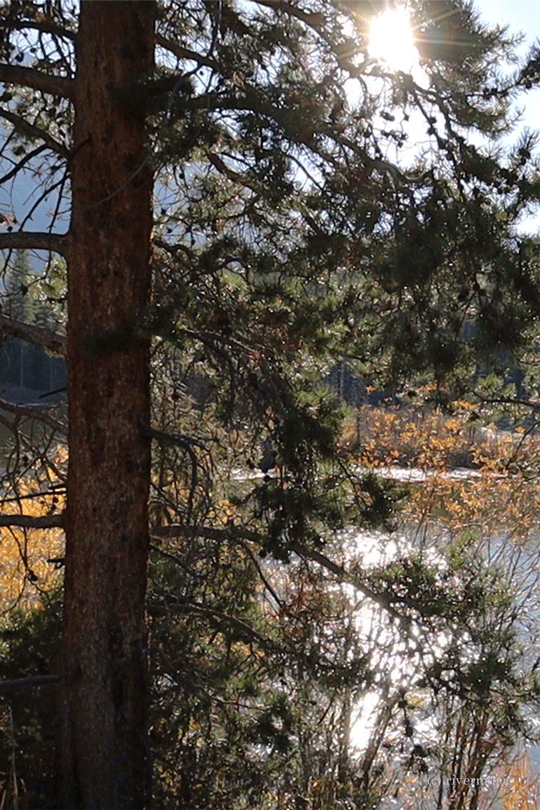
Sunlit Wetlands, Cathedral Cliff area, Beartooth Plateau, Wyoming
(c) gif by riverwindphotography
429 notes
·
View notes